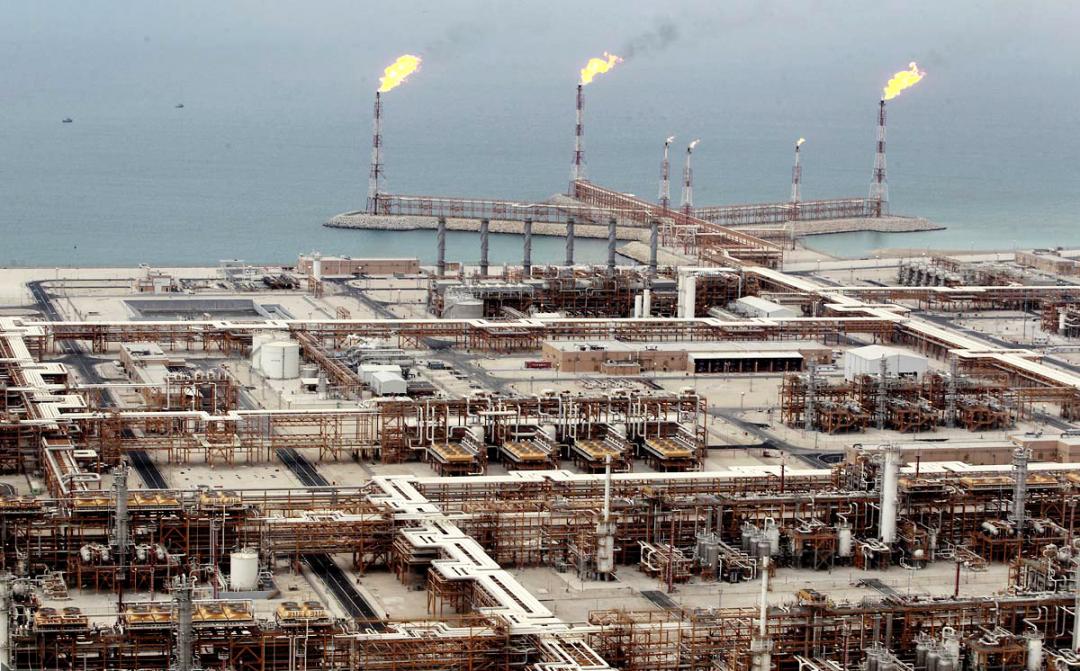Iran can surpass Qatar’s rate of extraction from the South Pars Gas Field by mid-2016, should the phases come on stream according to schedule, deputy oil minister said on Wednesday.
"As soon as all 28 phases become operational in the joint gas field, Iran's production will exceed 730 million cubic meters per day, which translates into overtaking Qatar's gas extraction and processing capacity at the field," Rokneddin Javadi was quoted as saying by Mehr News Agency.
Iran is currently lagging behind Qatar in terms of extraction from the South Pars in the Persian Gulf, with the tiny Arab neighbor reportedly drawing 1.6 times faster from the joint field.
Elaborating on new development plans of the gas field, Javadi said, "Phases 15-17 will be officially inaugurated by the end of the current Iranian year (March 19, 2016). Moreover, plans have been made to commence gas production from phases 19-21,"
Referring to the plan to extract 10 mcm of gas per day from phases 16 and 17 of offshore wells, the official said the gas will be transferred to Iran's Gas Trunkline—aka IGAT—which will be either used to satisfy domestic demand or exported locally and internationally via pipelines and liquefied natural gas projects.
"Natural gas production from Phase 17 will rise by 50 mcm a day in the near future," he said.
According to Javadi, gas production capacity is expected to rise by 100 mcm by March 2016, the same as last year.
"Alongside the dramatic jump in gas production, condensate production capacity will also experience a sharp rise," he said, adding that each new phase has the potential of producing 37 million barrels of condensate.
Referring to the production of 500,000 tons of LNG as well as 500,000 tons of ethane upon the completion of each phase, Javadi predicted that as soon as phases 15 and 16 come on stream, 1 million tons of LNG and 1 million tons of ethane will be supplied to petrochemical industries to provide their much-needed feedstock.
Plans have been made to complete all the South Pars development plans by mid-2016, in which case total LNG and ethane production will exceed 10 million tons.
Expanding Gas Markets
Iran is in negotiations to export natural gas to Oman, Kuwait and India in the post-sanctions period, managing director of the National Iranian Gas Company said.
"Gas export contracts with Iraq and Pakistan have been finalized … Initial negotiations have been held to carry out the second phase of gas supply to Turkey and Iraq," Hamidreza Araqi was quoted as saying by ILNA on Wednesday.
Tehran is mulling two routes for gas supply to Kuwait; the first would be via Basra in Iraq via a pipeline. A second plan calls for embarking on gas supply through the sea from the southern Bushehr Province.
In addition, Iran signed a contract earlier this month to supply 20-35 million cubic meters of gas per day to three power plants in the southern Iraqi city of Basra near the Iranian border. The volume will reach 45-60 mcm/d, once gas supply to Baghdad starts.
Iran is the fourth biggest producer and the fourth biggest consumer of natural gas in the world. It produced 173 billion cubic meters of gas in 2014, the most after the United States, Russia and neighboring Qatar.
In addition, five LNG production projects are due for launch by 2018, the official said without elaboration.
Data show the Persian Gulf country holds an estimated 33 trillion cubic meters of gas, the world's second largest proven reserves after Russia.
Tehran currently exports natural gas via pipelines to three neighboring states, namely Turkey, Armenia and Azerbaijan, and imports Turkmen gas. Ankara receives more than 90% of Iran’s gas exports under a long-term contract, with Yerevan and Baku receiving around 6% and 3% of Iran’s natural gas exports, respectively, under swap agreements.
Earlier this week, President Hassan Rouhani said Iran's gas production capacity will reach 1 billion cubic meters in two years. According to published reports, gas output stands at around 600 million cubic meters a day.
The country's gas refining capacity is planned to reach 330 bcm per year by 2017 and top 400 bcm per annum by 2020, while gas production capacity is expected to rise to 1,200 bcm per annum in five years.
Araqi had earlier said the untapped potential in exporting gas to neighboring countries through the Persian Gulf can raise Iran's gas export ceiling to 100 mcm/d, as they are in dire need of gas as a cheap and clean fuel.


